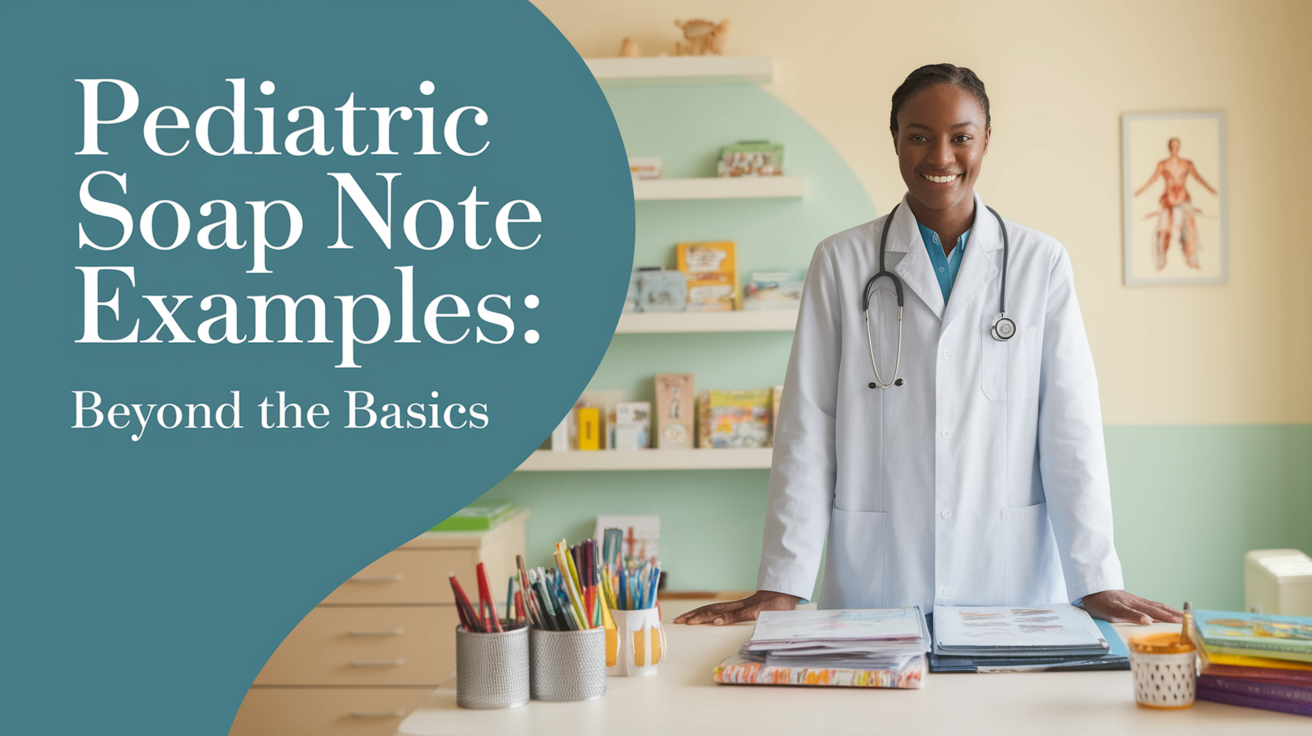
Documenting pediatric care isn’t just paperwork—it’s storytelling with purpose.
When a 4-year-old can’t articulate where it hurts or a teenager masks their true feelings, standard documentation falls short.
Children express their needs differently, often communicating anxiety through physical complaints like stomach aches rather than direct communication.
Your pediatric SOAP notes must capture these nuances, incorporating observations about behavior, play, and developmental milestones while including parental insights.
Each note becomes a chapter in the child’s ongoing healthcare experience, requiring simplicity and clarity that respects their unique experience.
Why Pediatric Documentation Is Different?
Children aren’t just small adults. Their bodies and minds work differently, and they express themselves differently, too.
Think about it: a 4-year-old can’t tell you exactly where it hurts, and a teenager might hide how they really feel. Parents often speak for their children, adding another layer to consider.
This means your notes need to use simpler language while including observations about behavior and play. You’ll need to document what parents and teachers report and track growth and development over time. Each note tells part of the child’s ongoing story.
Did you know? Children express anxiety through physical complaints like stomach aches more often than adults. Your documentation should connect these dots!
What Are SOAP Notes, Anyway?
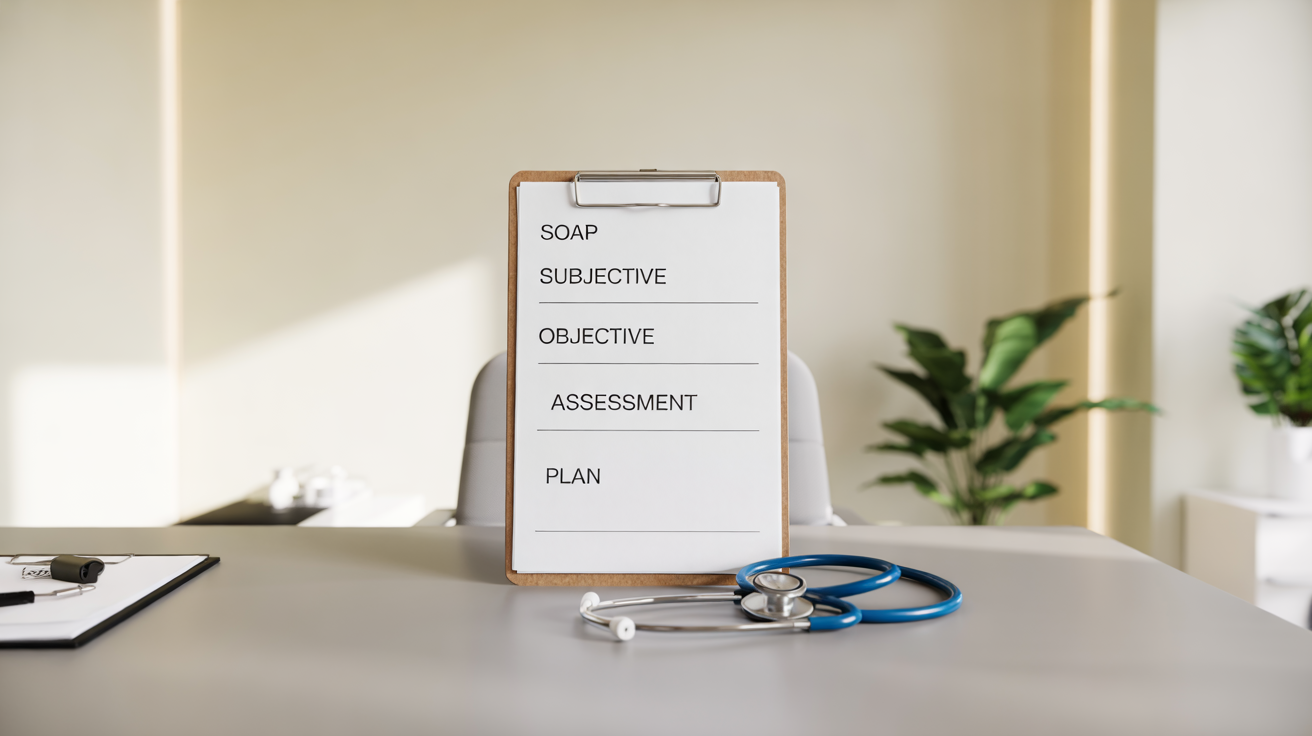
SOAP notes are a standard way to organize patient information. They help you track care and share information with other providers. The letters stand for:
- S – Subjective: What the patient (or parent) tells you
- O – Objective: What you observe and measure
- A – Assessment: Your professional opinion about what’s happening
- P – Plan: What you’ll do next
For kids, these notes do even more. They create a record of how a child grows and changes, show if treatments are working, and help prove to insurance companies why certain care is needed.
PRO TIP: Create a special section in your SOAP notes for developmental milestones. This helps track progress against age-expected norms and catches delays early.
Making SOAP Notes Work for Kids

1. Keep It Simple
When writing about children, simplicity wins. Use short sentences of about 8-12 words. Skip complex medical terms whenever possible. Create clear sections with enough white space to make your notes easy to scan. Your goal is clarity that respects the child’s experience.
Let’s pause for a moment. Picture the last child you worked with. How would they explain their situation? That’s the clarity you’re aiming for.
2. Show, Don’t Just Tell
Kids respond to visuals. Why not include them in your notes? Simple drawings can show where pain occurs. Charts can track moods or behaviors over time. Diagrams can explain treatments to families in ways words cannot. These visual elements create a richer record of the child’s experience.
3. Focus on Function
What matters most isn’t always the symptoms. It’s how those symptoms affect daily life.
Instead of writing “Patient exhibits hyperactivity,” try “Child has difficulty sitting through meals and school lessons, often leaving his seat after 2-3 minutes.”
This focus on function helps everyone understand the real impact of the condition.
4. Bring Parents Into the Picture
Parents are your partners in pediatric care. Your notes should document what parents observe at home. Note any differences between what parents report and what the child says. Include information from teachers when available.
Write clearly enough so that parents can understand the notes if they need to review them. This collaborative approach improves outcomes for everyone.
PRO TIP: Create a take-home summary in simple language for parents after each session. This builds trust and improves follow-through on your recommendations.
Examples of Pediatric SOAP Notes
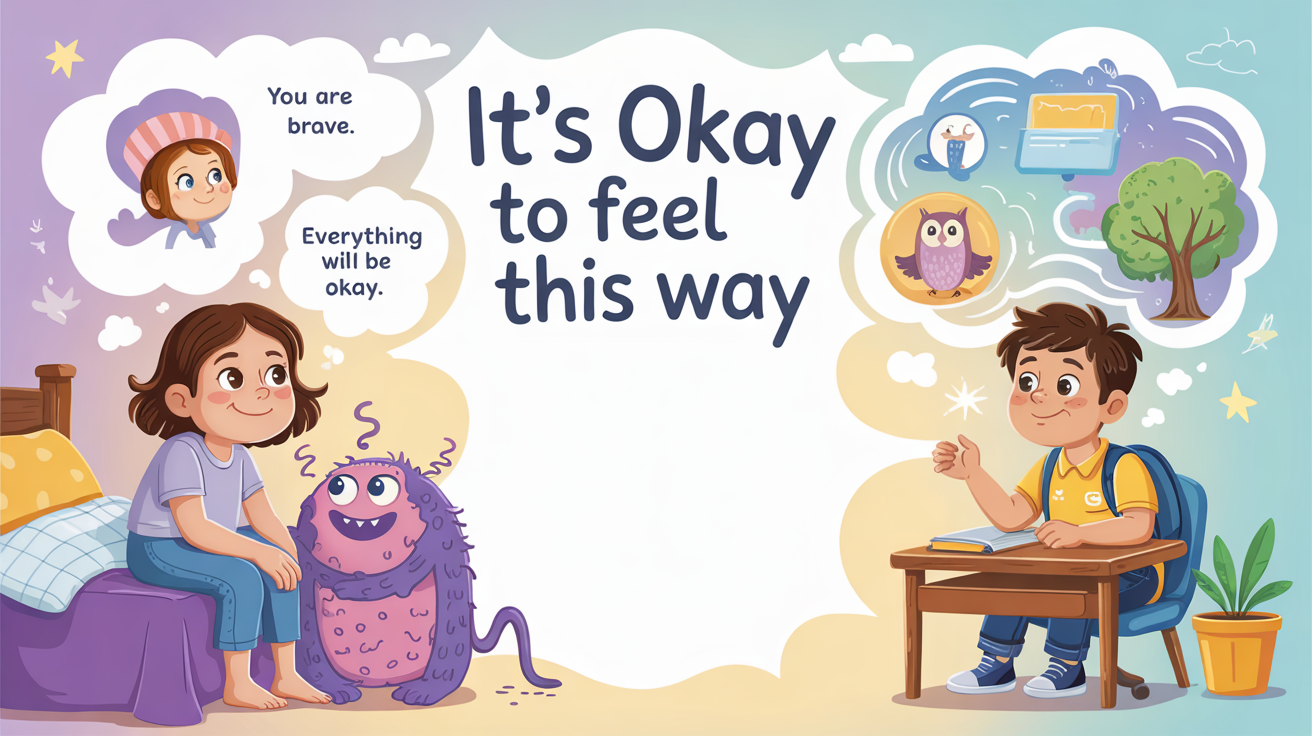
Generalized Anxiety in an 8-Year-Old
S: Emma’s mother reports increased worrying about “everything” over the past three months. Emma complains of stomachaches before school four days a week. She has trouble falling asleep and often asks “what if” questions about the next day.
O: During the session, Emma appeared tense, picking at her fingernails. She spoke softly and checked with her mother before answering questions. Drew picture of herself with a “worry monster” that was “bigger than my house.”
A: Emma presents with symptoms consistent with Generalized Anxiety Disorder (F41.1). Physical complaints appear related to anxiety rather than medical issues. Anxiety significantly impacts school attendance and sleep.
P: Emma would benefit from a structured approach to managing her anxiety symptoms. The following plan outlines supportive strategies to help her build coping skills and reduce daily distress:
- Weekly CBT sessions focusing on identifying worry thoughts
- Teach deep breathing technique – practice 5 minutes daily with parent
- Create a worry journal with parent support
- Follow up in one week to assess the effectiveness of breathing exercises
- Provided parent with handout on childhood anxiety
ADHD in a 12-Year-Old
S: Tyler’s teacher reports that he “can’t sit still for more than 5 minutes” and often blurts out answers. Parents note that homework takes “hours” because he gets distracted. Tyler states, “My brain goes too fast, and I can’t catch up.”
O: During the 45-minute session, Tyler changed positions in the chair 18 times. He interrupted the conversation 7 times. Struggled to complete the 10-minute drawing task, getting up twice to look out the window. Demonstrated good problem-solving skills when engaged.
A: Tyler’s symptoms align with ADHD, Combined Presentation (F90.2). Impacts academic performance and social interactions. Strengths include creativity and verbal expression.
P: To support Tyler’s focus, behavior regulation, and academic success, a combination of medical evaluation, structured strategies, and school collaboration is recommended:
- Refer to Dr. Johnson for medication evaluation
- Implement a behavior chart at home and school
- Teach time management using a visual timer
- Parent training session next week on consistent structure
- Coordinate with the school counselor about classroom accommodations
Breaking Down the SOAP Structure for Kids
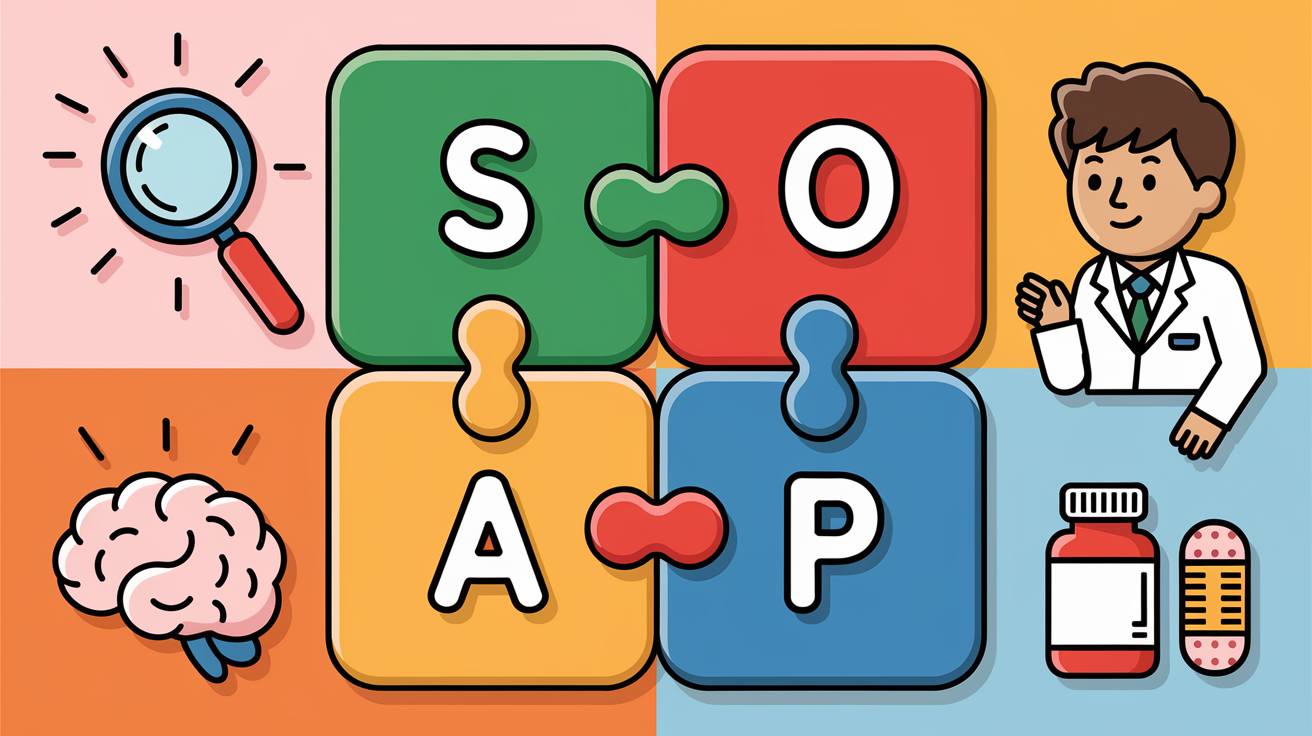
1. The Subjective Section
This part includes what you’re told about the child. For pediatric notes, include:
- The main concern (from both child and parent perspectives)
- Important history that affects current care
- Direct quotes that capture feelings or experiences
- Physical complaints that might signal emotional issues
For example: “Mom reports Jayden ‘worries about everything,’ especially school. Jayden says his stomach ‘feels twisty’ every morning before school.”
2. The Objective Section
This is what you observe directly. With kids, pay special attention to:
- Body language and facial expressions
- How they interact with toys or art materials
- Their energy level and attention span
- Physical signs like fidgeting, crying, or avoiding eye contact
Observations during play are gold for younger children. Note how they interact with toys or handle transitions between activities.
3. The Assessment Section
Here’s where you share your professional opinion. In pediatric notes:
- Connect behaviors to specific diagnoses
- Note how symptoms compare to typical development
- Address any differences between what parents report and what you observe
- Consider how cultural factors might influence presentation
Now for something different. Imagine watching your patient through a one-way mirror at home, school, and with friends. Your assessment should paint that complete picture.
4. The Plan Section
The plan outlines the next steps. Make it specific and actionable:
- List interventions with clear instructions
- Include both in-office treatments and homework
- Specify who is responsible for each step (child, parent, teacher, you)
- Set measurable goals for the next visit
Always include safety planning when needed, especially for children experiencing emotional difficulties.
Best Practices That Make a Difference

1. Watch Closely, Write Clearly
The best pediatric notes include specific examples. Instead of “child was aggressive,” write “child knocked over block tower when frustrated and hit table with fist twice.”
2. Get the Full Story
Children exist in many environments. Your notes should include information from parents and caregivers, teachers and school staff, the child themselves, and previous providers. This creates a complete picture of the child’s functioning across all settings where they spend time.
3. Review and Update Regularly
Children change quickly! Review your notes before each session. Note patterns and progress. Update goals as needed. Children can make dramatic improvements in short periods, and your documentation should capture these changes.
PRO TIP: Set a reminder to completely review each child’s case every 3 months. This helps you spot subtle changes that might otherwise be missed.
4. Use Technology Wisely
Many electronic health record systems offer pediatric templates. These can save time while ensuring you don’t miss important information. Just make sure any system you use is secure and private. Take a breath.
Documentation might seem like paperwork, but for children, your notes tell their story. They deserve to have that story told well.
Overcoming Common Challenges
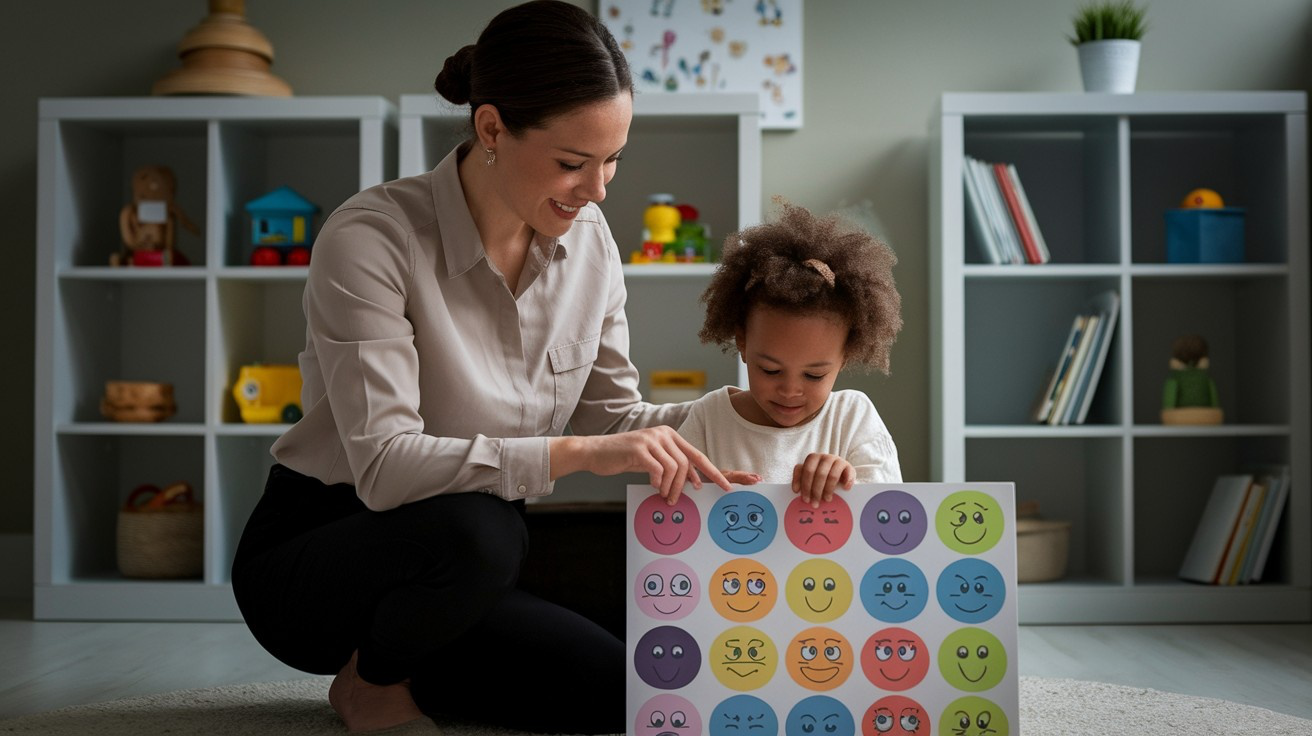
1. When Kids Can’t Express Themselves?
For younger children or those with communication difficulties, use play-based assessments and document non-verbal communication carefully. Ask parents to take videos of concerning behaviors at home when appropriate.
Consider using picture scales for feelings or pain to give children alternative ways to express themselves.
2. Balancing Privacy and Parental Rights
This gets tricky, especially with teens. Know your state’s laws about when parents can access records and what requires parental consent.
Learn proper ways to document sensitive information. Understand when confidentiality can be broken for safety reasons. Having clear policies helps navigate these complex situations.
3. Finding the Time
Quality documentation takes time, but there are ways to make it manageable. Use templates for common situations you see regularly.
Try to document during or immediately after sessions while details are fresh. Focus on what matters most for care rather than trying to document everything. Consider using voice-to-text technology if it helps you save time without sacrificing quality.
Final Thoughts
Effective pediatric documentation alters routine paperwork into powerful clinical tools.
By adopting SOAP notes with child-specific approaches—keeping language simple, focusing on function over symptoms, incorporating visual elements, and including multiple perspectives—you create a comprehensive record of each child’s growth and development.
Regular reviews help catch subtle changes early, while technology streamlines the process.
Remember that documentation challenges like communication barriers with younger patients and privacy concerns with teens require thoughtful solutions.
Beyond meeting clinical and insurance requirements, your notes tell each child’s unique healthcare story—one that deserves to be told with care and precision.
If you’re interested in more informational content on mothers and babies, feel free to click here and research other blogs that you might enjoy.
